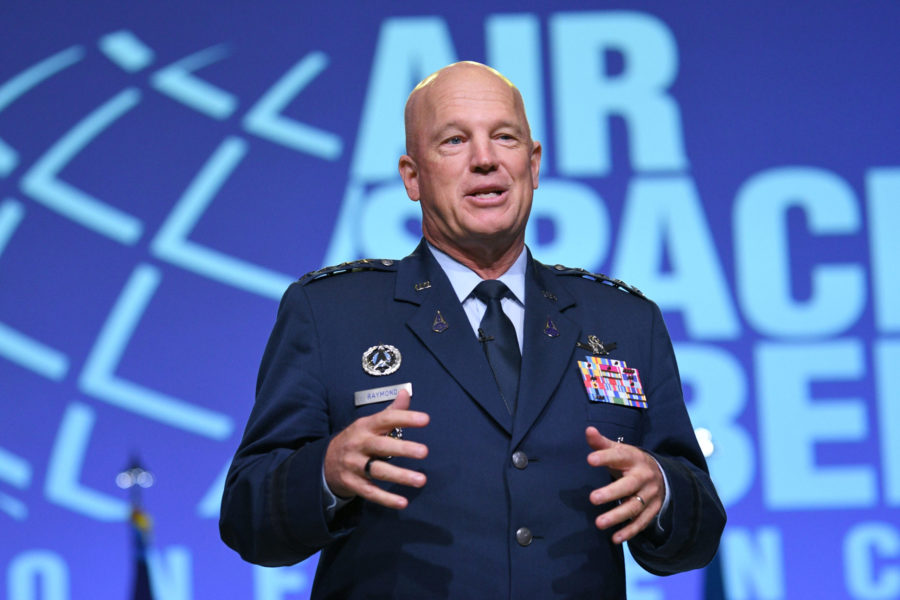The incorporation of 350 new Guardians into the Space Force and the transfer of units and missions, including satellite communications capabilities from the Navy and Army, will be delayed if a defense budget does not pass by Sept. 30, Space Force leaders indicated.
“We might get delayed a little bit if there’s a CR [continuing resolution],” Chief of Space Operations Gen. John W. “Jay” Raymond said at the Air Force Association’s Air, Space & Cyber Conference in National Harbor, Md.
“We are going to be [starting the transfers] this year beginning 1 October, as long as the law allows and the budget passes,” Raymond said. “We’re gonna bring these units from the Army and Navy over—this is the first tranche.”
Vice Chief of Space Operations Gen. David D. Thompson told Air Force Magazine on Sept. 20, on the sidelines of the conference, that he expected the delay to happen despite the small cost associated with the move. Thompson cited the required new budgetary authority from the pending National Defense Authorization Act, which is still moving through Congress.
Still, Raymond said the legwork with the other services is done.
“Over the last year and a half, we have worked with the Army and the Navy and the Air Force to determine which capabilities come over to the Space Force,” Raymond said at ASC. “The intent was to consolidate, increase our operational capability, to increase our readiness, and to do so in a more efficient manner.”

The Naval Satellite Operations Center and U.S. Army Satellite Operations Brigade are among the units transferring with global assets spanning the continental United States, Hawaii, Guam, Germany, and Japan.
Among the CONUS naval assets that would shift to the Space Force in fiscal 2022 are the Navy Satellite Operations Center at Point Mugu, Calif.; NAVSOC Detachment A at Prospect Harbor, Maine; NAVSOC Detachment C at Finegayan, Guam; and NAVSOC Detachment D at Schriever Space Force Base in Colorado Springs, Colo.
While retaining its core missile defense and GPS land maneuvering capabilities, the Army’s transfers of units and capabilities to the Space Force are more extensive.
Stateside, the Army’s 53rd Signal Battalion, Detachment A, at Fort Detrick, Md., and the 53rd’s Detachment B at Fort Meade, Md., will move over, as will the Combined SATCOM Support Center offices at Peterson Space Force Base in Colorado Springs, Colo., Regional SATCOM Support Center-East at MacDill Air Force Base in Tampa, Fla., and Regional SATCOM Support Center-West at Peterson.
In the Pacific, the Army’s 53rd Signal Battalion, Detachment D, in Wahiawa, Hawaii, and the Regional SATCOM Support Center-Pacific at Wheeler Army Airfield in Hawaii will shift.
In Europe, the 53rd Signal Battalion, Detachment C, in Landstuhl, Germany, and the Regional SATCOM Support Center-Europe in Stuttgart, Germany, will transfer. The 53rd Signal Battalion, Detachment E, at Fort Buckner, Japan, is also slated for transfer.
Thompson said the units and missions would continuing performing their functions for their home service and lose no operational capability. The service members, who are in many cases administratively assigned to the Space Force, would still serve in their roles even though their transfer to the Space Force may be delayed.
Congress is expected to pass a continuing resolution by Sept. 30 to keep the Defense Department funded, but that will not allow any new programming authorities until the fiscal 22 NDAA passes both the House and the Senate and is signed by the president.
